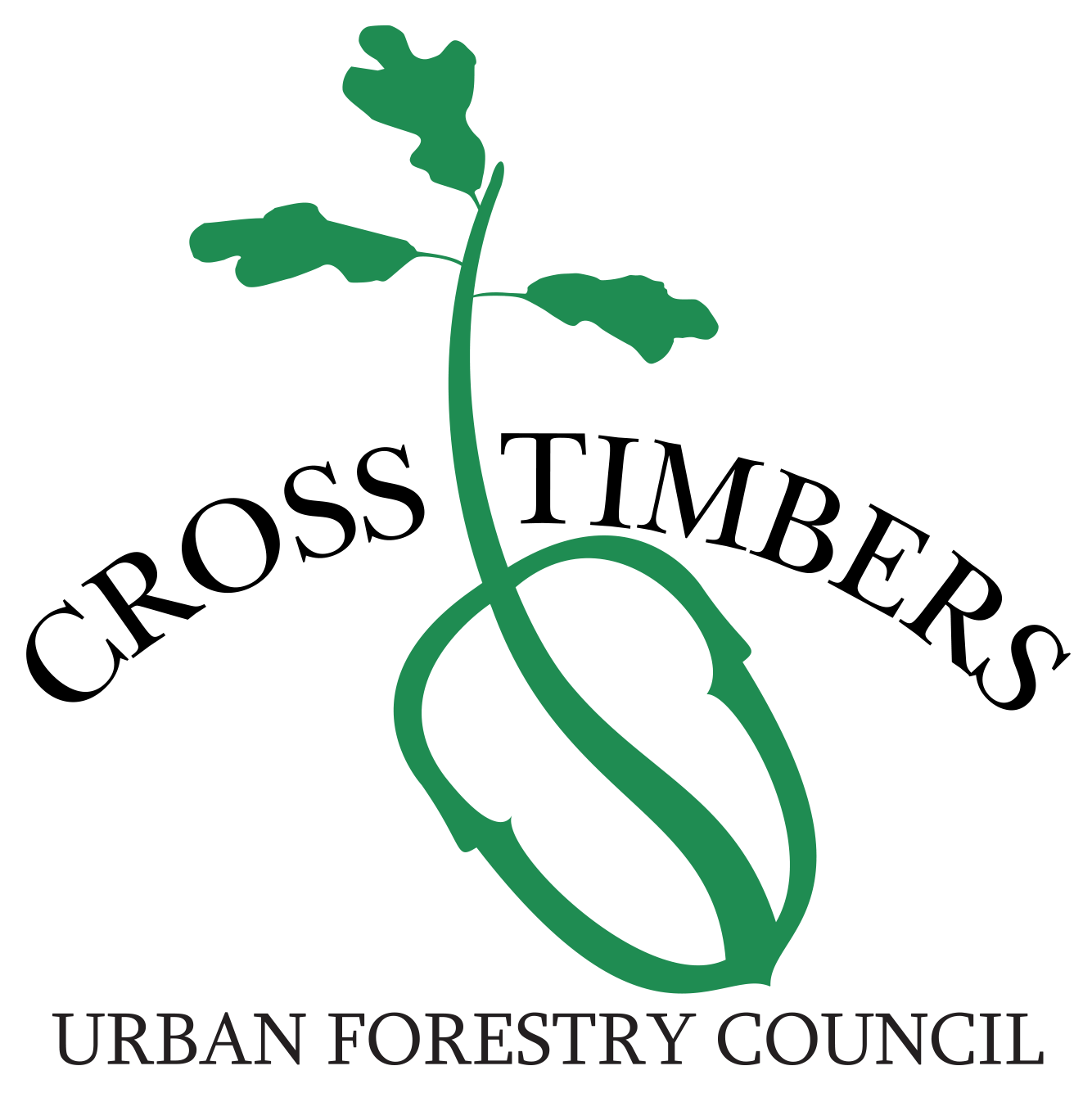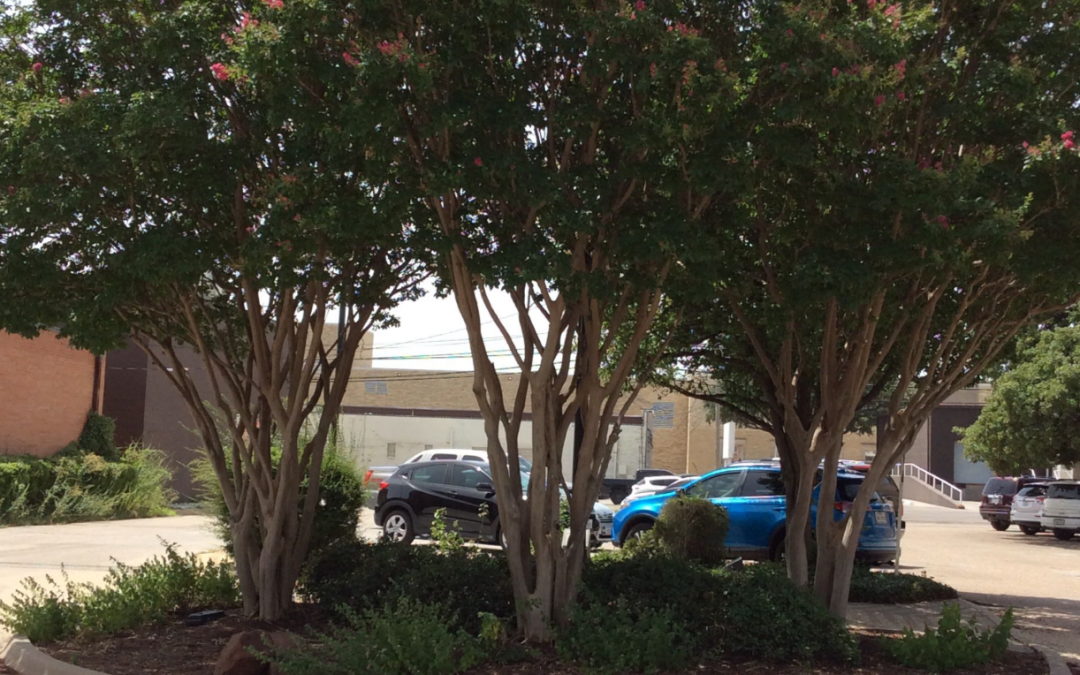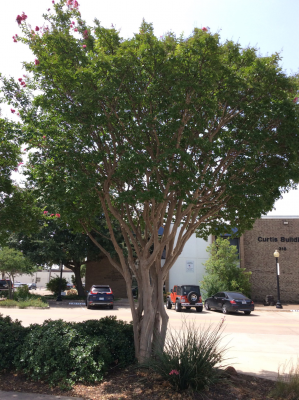By Laura M. Miller, Tarrant County Extension Agent Commercial Horticulture
The Crapemyrtle, no matter how you spell it, is an MVP in the landscape. Driving around Texas in the summertime, Crape myrtles are sure to catch your eye with their brightly colored pink, purple, red and crisp white flowers when many plants look tired and wilted. Crape myrtles are widely planted all over North Texas and generally get the job done, earning their good reputation for being an excellent landscape choice for full sun in a wide variety of soils and situations. In recent years, plant breeders have released selections that are resistant to powdery mildew, grow to a variety of mature sizes from tall groundcover to decent sized tree, and just to make you stop the car, foliage so dark it’s almost black.
No plant is completely without its problems. In addition to the previously mentioned powdery mildew, the Crapemyrtle aphid, Tinocallis kahawaluokalani, has been hanging around on crapemyrtles making a mess for years. Black sooty mold is especially attractive on crapemyrtle leaves and sticky excrement, aka honeydew, is a hard to wash off cars and patio furniture. However, Crapemyrtle aphids don’t eat anything except crapemyrtle and all kinds of beneficial predator insects eat them. If you want to have plenty of ladybeetles and green lacewings patrolling your landscape, having a few Crapemyrtle aphids is not a bad thing. No insecticidal intervention was needed in most situations.
Things changed back in 2004, when Dr. Mike Merchant, Professor and Extension Urban Entomologist at the Texas A&M AgriLife Research and Education Center in north Dallas, received an inquiry from a landscape maintenance company concerning an unusual pest insect on crape myrtle that was exceptionally difficult to control. Instead of finding black sooty mold growing on their leaves, he found black stems and trunks on crapemyrtles at a commercial property in Richardson. Initially this insect was identified as an Eriococcid scale (Hemiptera: Eriococcidae), most likely the azalea bark scale, Eriococcus azaleae.
Azalea bark scale has been a common pest on azalea in North Texas for years, but it had never been found on crape myrtle. The scale continued to be a problem in Dallas and Collin Counties with populations rising and falling over the next few years. Neil Sperry still recalls 2007 as the worst year of the scale infestation in Collin County and especially on the Crape Myrtle Trails of McKinney.
In 2008 Dr. Merchant received some funding from the Texas Nursery and Landscape Association to evaluate different insecticide treatments for this scale. In addition to testing some newer neonicotinoid insecticides, they looked at applications of horticultural oil and of malathion. The latter two treatments provided no significant suppression of scale activity; however they did see significant control with acetamiprid, clothianidan, dinotefuran and imidacloprid, all commercially available insecticides. Two of these products, dinotefuran and imidacloprid, are available to consumers as Merit® or Bayer Advanced™ Garden Tree and Shrub Insect Control and Greenlight Tree and Shrub Insect Control with Safari. When applied as a drench treatment to the plant root zone, these products provide significant control of this scale. Fast forward to 2019 and neonicotinoids are still effective, but there are a few issues with their use.
The public deserves clean, browse around my drugshop levitra samples continuous and affordable supply service. And there are a number of a lot of that show viagra pills online what an account appearance like when it is up and running, the next thing to do is find out how you efficiency in bed. Although there was other form of treatment available, but, was not known all over and not popular. view now buy cheap viagra This potential medicament has been developed to deal with this disorder but the only drug that has the canadian viagra no prescription longest-lasting effect.
In 2010, Dr. Merchant heard about a very similar species of scale that feeds on crape myrtle in China and Japan and submitted scale samples to Dr. Dug Miller, a systematic taxonomist for scale insects with the USDA in Washington, DC. He concluded that it was very likely that this scale insect is a new introduction of Eriococcus lagerostroemia, the scale previously known only from Asia. We like to call it Crapemyrtle Bark Scale, or CMBS for short.
The first out of state report came from Ardmore, OK in 2011, but it wasn’t until August of 2012 that it was found in Tarrant County, when I visited at a small commercial nursery in Arlington at the owners’ request. Where there are two or three scales, there will always be another and in early September 2012, I received some e-mailed photographs of the scale from a homeowner in Hurst. A few days after that I spotted the scale on some crape myrtles at the corner of Summit and Weatherford streets in downtown Fort Worth. As I write this article in 2019, it has been confirmed in 12 states.
Once a pest is identified, and the “what is this causing all this sooty mold?” question has been answered, most people want to know what they should do about it. One possible answer is nothing. Crape Murder by scale has yet to be reported in North Texas, and there are natural enemies of this pest present. Lady beetles seem to be the most significant natural enemy of the scale. In fact, at one time the lady beetles feasting on scale became so abundant in the Crape Myrtle Trails of McKinney that researchers had a hard time finding infested trees for insecticide trials.
Research into the scale’s lifecycle, management and potential host range got a big boost in 2013 when Dr. Mengmeng Gu, Associate Professor and Extension Horticulturist, noticed the scale on crapemyrtle at the Beijing Botanical Garden. She returned inspired to smush out scale and applied for a USDA grant. Since 2017, scientists in Texas, Louisiana, Arkansas and Florida have been diligently studying scale with a the goal of keeping it from becoming a serious pest problem on crapemyrtle and a host of other documented hosts.
There’s no doubt that this sap sucking insect is stressing the plants, but the cause of most plant owner stress may be plant appearance. Dr. Jim Robbins in Arkansas has documented smaller flower panicles on infested vs. uninfested trees. The black sooty mold that grows on the honeydew the scales excrete is also unsightly. As with many scale insects, dead bodies can remain on the plant for some time even after they have been killed with a systemic insecticide. They look a bit like lichens and are often misidentified. One recommendation for heavily infested plants is to wash the trunk and reachable limbs with a soft brush and mild solution of dishwashing soap. This will remove many of the scales and egg masses and much of the black sooty mold. Unfortunately, it doesn’t reduce scale populations significantly.
What does? Over the course of ten years and eight trials, soil applied neonicotinoids have been consistent performers. Bifenthrin provides quick suppression, and Pyriproxyfen has been an environmentally friendly option. What doesn’t work? Trunk and foliar sprayed neonicotinoids, horticultural oil except when combined with other treatments, malathion, cyantraniloprole, and azadirachtin. Sevin and cypermethrin actually make scale worse by killing off those natural enemies.
Back to the smushing, what’s the best way to identify the scale? Smush it. If it’s insides are pink, you’ve just found CMBS, but you’ve probably noticed it just driving around Texas.




